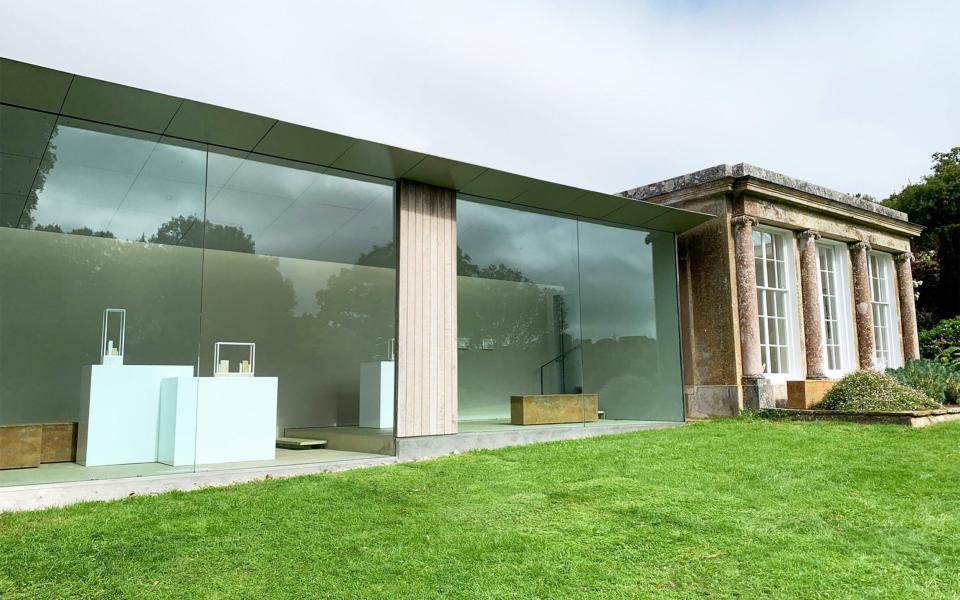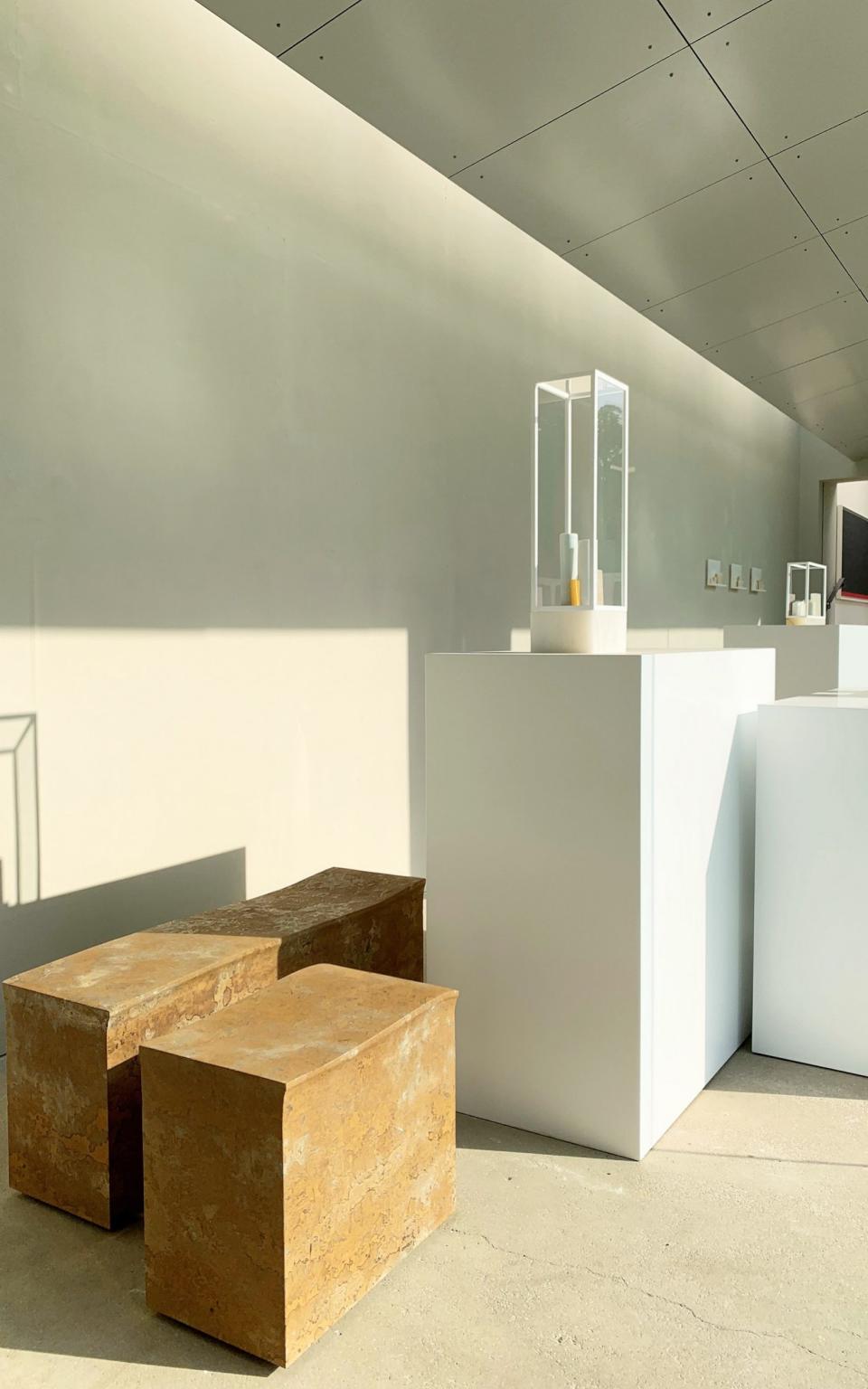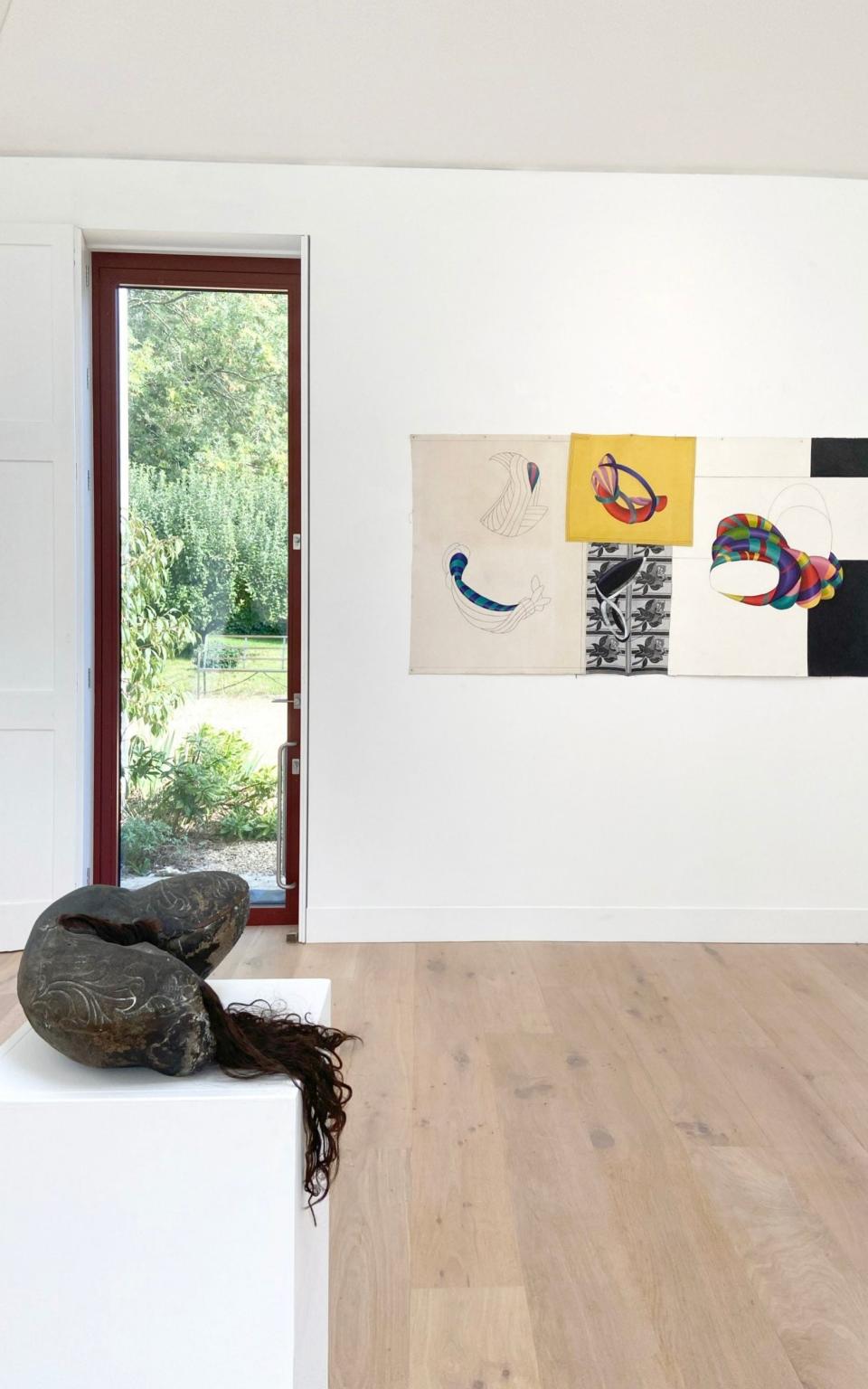Edmund De Waal/Jacqueline Poncelet, New Art Centre, Salisbury, review: contradictions and creepiness

If ever Admiral Nelson needed his telescope, it was to spy the speck of glinting sea that is visible from Roche Court, near Salisbury. The elegant grey stone house was built for him in 1804, as a suitable spot to spend his dotage, though he never lived there. Fate, and a French sniper at Trafalgar the following year, had it otherwise.
Today, Roche Court is home to the New Art Centre, a sculpture park and gallery, though that view of far-off Solent, around which the entire house was designed, still crowns the parkland’s horizon. Its glimmering, shard-like presence is a perfect match for a radiant exhibition of new work by the British artist Edmund de Waal, in which paper-thin slices of golden porcelain lean against, or nestle among, other cuboid and cylindrical forms.
Tacet – the word means silent or rest in Latin – comprises 17 works, of which eight are these flocks of little objects. Each group is housed in either a slender glass vitrine, or on a white onyx shelf. In either case, their composition is so restrained; each slab, shard and vessel so exquisitely placed that they generate a sort of visual rustle.
The resemblance to Giorgio Morandi’s still life paintings hits you immediately – as if they had come to life. And, as with Morandi, it is the individual intended contrasts and contradictions that makes the whole hum: jagged/sleek, see-through/clouded, white/ochre, porcelain/alabaster.
Also in the exhibition are nine solid benches carved from a particular seam of tawny-coloured marble favoured by Henry Moore. Reminiscent of the worn steps of an old church, the benches have been placed both inside and out, and it’s perfectly ok to sit on them (timed bookings make cleaning possible). I recommend the sweetly small pair on the rear lawn, where, along with Nelson’s briny view, you can bask in the coo of wood pigeons and swishing trees. Theo, the Great Dane who belongs to Roche Court’s current owner, gallerist Madeleine Bessborough, is also likely to lollop by.

In the Design House, meanwhile, is a display of deeply unsettling works by Jacqueline Poncelet. Now and Then traces the British artist’s journey from the precious china cups she was making at the Royal College of Art in the Eighties, through her various embracings and discardings of materials such as hair, leather and carpet, to a relatively recent series of pattern-led watercolours and blankets.
We begin with an initially confusing anteroom, of works by artists such as Phyllida Barlow and Alison Wilding, whom Poncelet considers to have achieved what she has sought to do, only better. Hardly the most assuring of starts, and possibly better placed at the exhibition’s end, since the connections between these artists only make sense after one has submitted to the miasmic unease engendered by Poncelet’s own works.
Poncelet is an agitator. Her amalgams are designed to provoke and to upend and she never stays with any of her ideas for very long. That means each series, which sometimes consist of only two or three pieces, is unnaturally concentrated. They bite at you, rather than nibble.
Tartan (1993-4), for instance, is an assemblage of carpet fragments stitched into an uneven, ragged whole. Not any old carpet – she favours the kind of rug that a set designer for a drama about a serial killer in Seventies Britain would buy up by the roll. Then there’s Bronze with Hair (1988), a slug-like protuberance from which hair (real, wavy) flows over the plinth. I warned you.

I hovered a while in front of Untitled Drawing (1985) a vast, crayon and pencil work on paper that, the longer you look, reveals a succession of dreamy, biomorphic images – legs trailing underwater, and so on. A small room nearby, containing four works that toy with repeating patterns of wooden manikins, demonstrates an insanely clever understanding of how pattern can seethe into and tamper with the brain.
Man and Boy (2008-2012), for instance, is a man’s shirt with a much smaller one tucked inside, covered with iterations of a larger puppet cradling a small. Is the larger puppet a god? Is the small one alive or dead? I’m not sure I want to know the answer. Merry-go-round (2009), a configuration of large and small puppets turn into what look like crabs clattering all over the wall. It’s seriously disturbing, but that is the point.
Until Jan 10, by appointment: 01980 862244; nac@sculpture.uk.com, sculpture.uk.com

